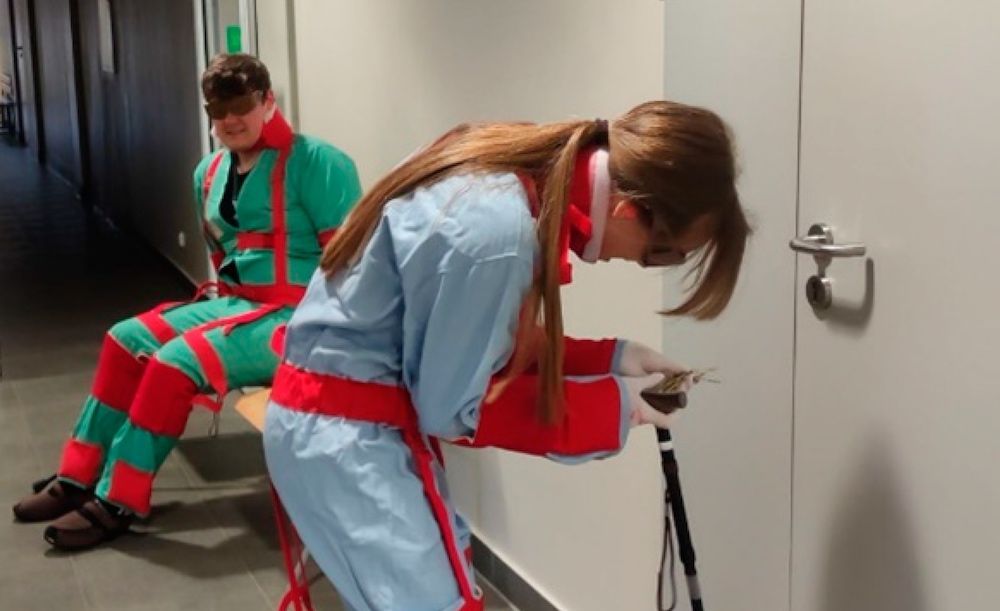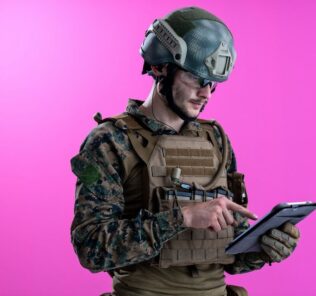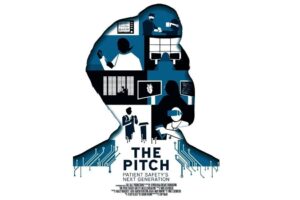How to Use Empathy Suits in Clinical Simulation to Give Students the Patient Experience
Empathy Suits are an excellent way to have clinical students become immersed in a representation of the patient experience. Designed to create physical restrictions on the wearer, a restrictive empathy suit will simulate conditions such as joint restricting conditions, visual impairment, reach restriction, and increase in body weight. This HealthySimulation.com article by Phil Gurnett, RN, MSc, BSc PG Cert Ergonomics, Clinical Simulation Fellow at the University of Greenwich will explore how to incorporate the Empathy Suits, particularly ageing suits, into your clinical simulation program to further student engagement and learning.
Types of Simulated Suits
When used properly, Empathy Suits can give important insight into patients’ experiences for the wearer and allow the participants to share their experiences and frustrations with learners in the caregiver role. There are a myriad of suits available under the term “empathy”. The most common empathy suits come under the category of ageing. However, the conditions the suits portray are not necessarily restricted to the ageing process.
Sponsored Content:
Other empathy suits display pregnancy and obesity. The pregnancy suits provide weighting and shaping to represent the wearer being pregnant. Obesity suits simulate both weight and increased body habitus. These suits use weighted clothing, typically with a foam-shaped suit. In the author’s experience, the empathy suits are supplied with clothing to meet the suit’s needs as well. Interestingly, some have used the obesity suits in combination with manikin-based simulation.
Commonality in Physical Health Empathy Suits
In general, an empathy suit for physical health challenges focuses on a person’s posture through the addition of weight or physical restriction on joints or both. The addition of the weights to a wearer’s body demonstrated how the weight adds fatigue to the actions they undertake while wearing the suit. The addition of physical restriction to the movement of joints (predominantly knee, elbow, and wrist) helps the wearer understand how people with limited mobility interact with their environments, such as the various arthritic conditions. The combination of fatigue and physical restriction on movement enables the wearer to experience and gain empathy on simulation activities that replicate daily living activities for patients with these conditions. Building a scenario that requires the wearer to put on a pair of shoes or an item of everyday clothing on their own or with a ‘carer’ are some simple activities that can be addressed.
The other commonality between suits is the restriction of the wearer’s senses. Hearing can be restricted with ear defenders, limiting different tone levels. Sight is restricted with some sort of visual aid such as goggles, visors, or glasses that restrict some visual fields. The benefit of these devices is that they can give a variety of sensory impairments that give different users different experiences. The different experiences and perspectives can be brought into the debriefing process after the experience.
Sponsored Content:
Variations in Physical Health Empathy Suits
There are a variety of manufacturers that have subtle variations in their products. The University of Greenwich has access to three different types of suits used across programs, and a fourth has been provided as a trial for the learners. There are other manufacturers worldwide, and this is not an endorsement of a particular product but a demonstration of the variety that can be purchased for use in your program.
One variation is around the visual restrictions that are incorporated into the simulation. Koken MPC uses a set of goggles that provide a tunnel vision restriction. The goggles can be worn over a learner’s prescription glasses and have an orange tint that reduces depth perception. The GERT suit also uses goggles with a wider field of vision but reduces the depth perception with a tint. The Erler Zimmer EASi suit uses a visor with magnetic films that provide a variety of visual disturbances such as cataracts, macular degeneration, or glaucoma.
The Sim and Skills geriatric simulation suit uses glasses with six interchangeable lenses to represent different conditions. Across the board, the aim is to provide an experience different from the one the wearer typically experiences. One activity that helps to bring empathy to the scenarios is to have the wearer don the glasses and try to convey what they are experiencing to the people around them.
Reduced hearing for all of the mentioned suits is provided by some sort of common ear protection. There are several ways to achieve sound reduction, such as over-the-ear noise reduction PPE or disposable ear plugs. One exception is the Sim and Skills suit, which uses a set of headphones and recorded noises that simulate tinnitus to various degrees.
A final variation is in the movement restriction. Three of the four suits described use restriction in flexion of the elbow. The Eler Zimmer suit uses a restriction in extension by using bungee cords between the body section and the wrists. This restriction adds fatigue when working at extension wearing the suits. These suits add an interesting dimension for learning opportunities when planning simulation activities.
View the HealthySimulation.com LEARN CE/CME Platform Webinar Is Clinical Simulation Moving Into a Post Plastic Era with Wearable Simulators? to learn more!
Ideas for Simulation-Based Education Activities
Understanding the functions of a suit allows the scenario designer to plan a series of engaging and thought-provoking activities for participants. The temptation is that suits are used as a novelty, but this misses a massive potential for students to understand the challenges their patients may experience and develop empathy.
Briefing for Maximimum Impact
When using suits, the clinical simulation designer must develop clear expectations and roles, as with any simulation. When empathy suits are used, the identification of the expectations of the wearer is the first briefing point. Commonly, in the author’s experience, the inclusion of expectation ensures the learners know who their support is, and the wearer will try and do as much as they can by themselves without help.
For the ‘supporters’, the briefing needs to highlight their essential role in maintaining safety for the wearer and, where indicated by the wearer of the suit, to intervene to assist in the completion of the activity. Individual institutions will have their risk assessment process/policies to follow to meet the balance of learners experiencing physical disability while maintaining the wearer’s safety.
Activities to Consider for Empathy Suits
There are two main activities to consider. The first activity is to walk a set path in a designated area. Depending on the design risk assessment, the simulation designer may include the navigation of steps, lifts, elevators, etc. This activity is undertaken with the person wearing the suit and the ‘supporters’. Observers can also contribute to this by identifying when and how support is offered or not. Walking while wearing an empathy suit can be a challenge, and a smaller course or route is advisable; however, this also depends on the time constraints.
The second activity is around eating and drinking. The clinical simulation activity asks a participant who is wearing the suit to sit at a table, pour a drink (at full stretch if using a suit that impacts extension instead of flexion), and drink it, either with a straw or through a cup. The second part of the simulation is to use utensils to cut the food and then eat the food. A grape is an excellent item with a standard plate, fork, and butter knife. This healthcare simulation activity is particularly challenging for people wearing a suit that restricts flexion at the elbows.
Creating a Meaningful Debrief
As with other simulation activities, the debrief is where the learning occurs. The author’s experience is that the participants and observers have a variety of experiences. Aticus Finch’s observation is, ‘You never really understand a person until you consider things from his point of view. Until you climb inside of his skin and walk around in it’ ( Harper Lee – To Kill a Mockingbird) holds true to this experience. Understanding the frustrations that include a reduction in the ability to perform simple tasks of daily living and the interaction with the learners in the role of supporters is key to the debrief. The debriefer should remember the importance of exploring the emotions experienced to support the psychological safety of every learner. The debriefer can focus on empathy and relate the participants’ experience to application in patient care as part of their future.
Conclusions on Simulated Suits
To conclude, the voice of a learner is essential. A student shared with the author their experience wearing a suit. They said they had been on lots of ward rounds and seen consultants regularly telling patients they needed to drink more, some even pouring glasses of water for the patient. It was not until the student had worn the suit that they realized they never questioned if the patient could reach out, pick up the glass, and put it to their lips to drink.
The incorporation of the student in the patient’s position during healthcare simulation allows for a challenging and empathetic experience that helps the learners to understand life from a patient’s perspective, both physically and emotionally. So, healthcare simulation designers should take the time to find the empathy suits in dusty bags at the back of the storage unit and start to use them.
Learn More About Obesity Suits!
Sponsored Content:

















